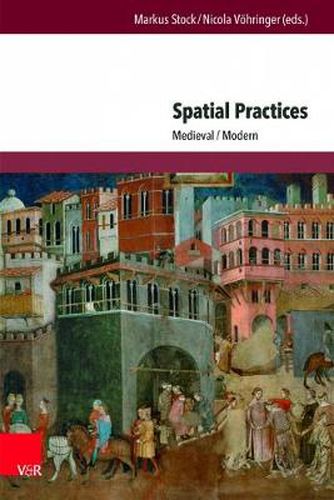Readings Newsletter
Become a Readings Member to make your shopping experience even easier.
Sign in or sign up for free!
You’re not far away from qualifying for FREE standard shipping within Australia
You’ve qualified for FREE standard shipping within Australia
The cart is loading…






In recent decades, the conceptualisation of space and place as social constructs, rather than static settings has received significant attention and has been re-evaluated with an emphasis on the cultural, social, and political practice. This shift moves away from regarding space as fixed, unchanging container towards a realisation that space is always inextricably linked with social practice and cultural signification. Thus, the study of spatial practices interrogates human action in different spaces, human agency in the production of space, and space in its capacity to prompt human action. By focusing on human action in manipulating and subverting space, and thereby creating multiple coexisting and overlapping spatialities, the interest also shifts from semiotic correlations in cultural expressions to events, practices, material and medial embodiment of culture. This collection of essays approaches the study of space and place from a historically inclusive perspective; it gives new insights into historical shifts and changes in the construction and perception of space as well as historical developments and diachonicity of literary, social, and architectural sites and places. It aims to gather a number of case studies in order to collect historically concrete evidence of such spatial practices as reflected in literature and art as well as in sources pertaining to the social and political life of premodern, early modern, and modern era. In recent decades the conceptualisation of space and place as social constructs, rather than static settings has received significant attention and has been re-evaluated with an emphasis on the cultural, social and political practice. This shift moves away from regarding space as fixed, unchanging container towards a realisation that space is always inextricably linked with social practice and cultural signification. Thus, the study of spatial practices interrogates human action in different spaces, human agency in the production of space, and space in its capacity to prompt human action. By focusing on human action in manipulating and subverting space, and thereby creating multiple coexisting and overlapping spatialities, the interest also shifts from semiotic correlations in cultural expressions to events, practices, material and medial embodiment of culture. This collection of essays approaches the study of space and place from a historically inclusive perspective; it gives new insights into historical shifts and changes in the construction and perception of space as well as historical developments and diachonicity of literary, social, and architectural sites and places. It aims to gather a number of case studies in order to collect historically concrete evidence of such spatial practices as reflected in literature and art as well as in sources pertaining to the social and political life of premodern, early modern, and modern era.
$9.00 standard shipping within Australia
FREE standard shipping within Australia for orders over $100.00
Express & International shipping calculated at checkout
Stock availability can be subject to change without notice. We recommend calling the shop or contacting our online team to check availability of low stock items. Please see our Shopping Online page for more details.
In recent decades, the conceptualisation of space and place as social constructs, rather than static settings has received significant attention and has been re-evaluated with an emphasis on the cultural, social, and political practice. This shift moves away from regarding space as fixed, unchanging container towards a realisation that space is always inextricably linked with social practice and cultural signification. Thus, the study of spatial practices interrogates human action in different spaces, human agency in the production of space, and space in its capacity to prompt human action. By focusing on human action in manipulating and subverting space, and thereby creating multiple coexisting and overlapping spatialities, the interest also shifts from semiotic correlations in cultural expressions to events, practices, material and medial embodiment of culture. This collection of essays approaches the study of space and place from a historically inclusive perspective; it gives new insights into historical shifts and changes in the construction and perception of space as well as historical developments and diachonicity of literary, social, and architectural sites and places. It aims to gather a number of case studies in order to collect historically concrete evidence of such spatial practices as reflected in literature and art as well as in sources pertaining to the social and political life of premodern, early modern, and modern era. In recent decades the conceptualisation of space and place as social constructs, rather than static settings has received significant attention and has been re-evaluated with an emphasis on the cultural, social and political practice. This shift moves away from regarding space as fixed, unchanging container towards a realisation that space is always inextricably linked with social practice and cultural signification. Thus, the study of spatial practices interrogates human action in different spaces, human agency in the production of space, and space in its capacity to prompt human action. By focusing on human action in manipulating and subverting space, and thereby creating multiple coexisting and overlapping spatialities, the interest also shifts from semiotic correlations in cultural expressions to events, practices, material and medial embodiment of culture. This collection of essays approaches the study of space and place from a historically inclusive perspective; it gives new insights into historical shifts and changes in the construction and perception of space as well as historical developments and diachonicity of literary, social, and architectural sites and places. It aims to gather a number of case studies in order to collect historically concrete evidence of such spatial practices as reflected in literature and art as well as in sources pertaining to the social and political life of premodern, early modern, and modern era.